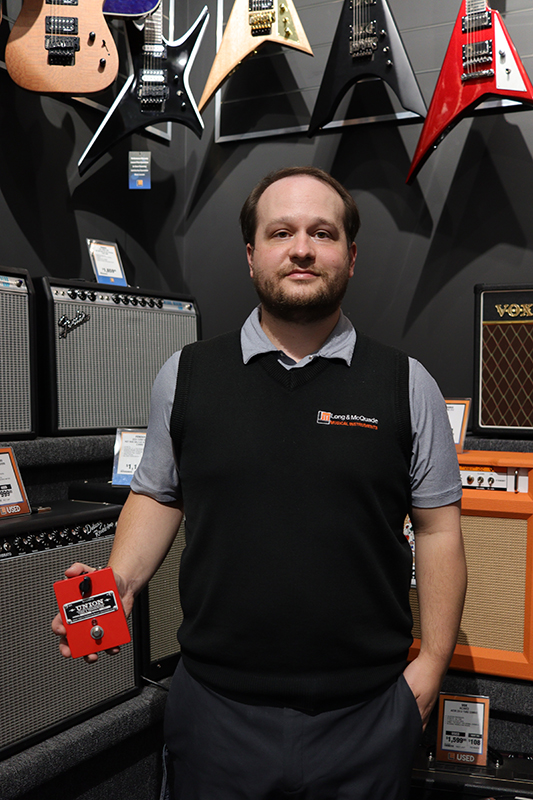Jordan Graham a guitar guru at Long & McQuade posing with his favourite, very expensive and very Canadian More boost pedal by Union Tube & Transistor
When most electric guitar players talk about their favorite pedals you should have on a board, rarely does a certain pedal come up in conversation.
Oh, they’ll mention distortion, overdrive, fuzz, delay, reverb, maybe even wah, phaser or univibe, but one lowly pedal hardly ever gets mentioned.
That pedal, my friends, is the forgotten wonder, the boost pedal!
No, the lowly boost is not as sexy as a “transparent” overdrive, a bucket brigade analogue delay or germanium fuzz, however it will transform even the most tired rig.
For the uninitiated, boost is kinda what it sounds like, it makes your guitar louder or put another way, it boosts your signal.
The beauty of it is you can put it almost anywhere on your board as it has many uses.
Put it before your amp and it is like having another channel. The extra volume can push your amp into a more distorted sound and it can do the same in front of your drive pedals making them more versatile.
Put it after your drive pedals and you can get an extra bump in volume, perfect for when you want to take a solo.
Also, some “vintage” pedals can have a drop in volume when engaged, a boost placed after can bring that volume back to where it should be.
Jordan Graham, a guitar player and employee of Long & McQuade, thinks it is the most important pedal on his board.
“Honestly, I’ve never found a bad use for it,” says Graham.
The boost is probably the first “transparent” drive. It just takes what you like about your tone and makes it louder.
“It doesn’t change your original guitar to amp tone,” says Graham.
Graham recommends one boost in particular, the More by Union Tube & Transistor from Vancouver, Canada.
This is a pricey offering at $300 but has up to +40db of gain on hand. That is one of the loudest boost pedals on the market.
“It’s just one knob, one chicken head on the top, so a super, super simple layout,” says Graham adding, “the more clockwise you turn it, the more gain you’re going add to your signal,” it couldn’t be simpler he adds.
For those not wanting to spend so much there are other offerings to be had. TC Electronics and Electro-Harmonix both have an offering for less than $100.
Many other brands are available as well, so don’t purchase based on price alone. It’s always important to try before you buy. So, go test one out and see if it is right for you.

